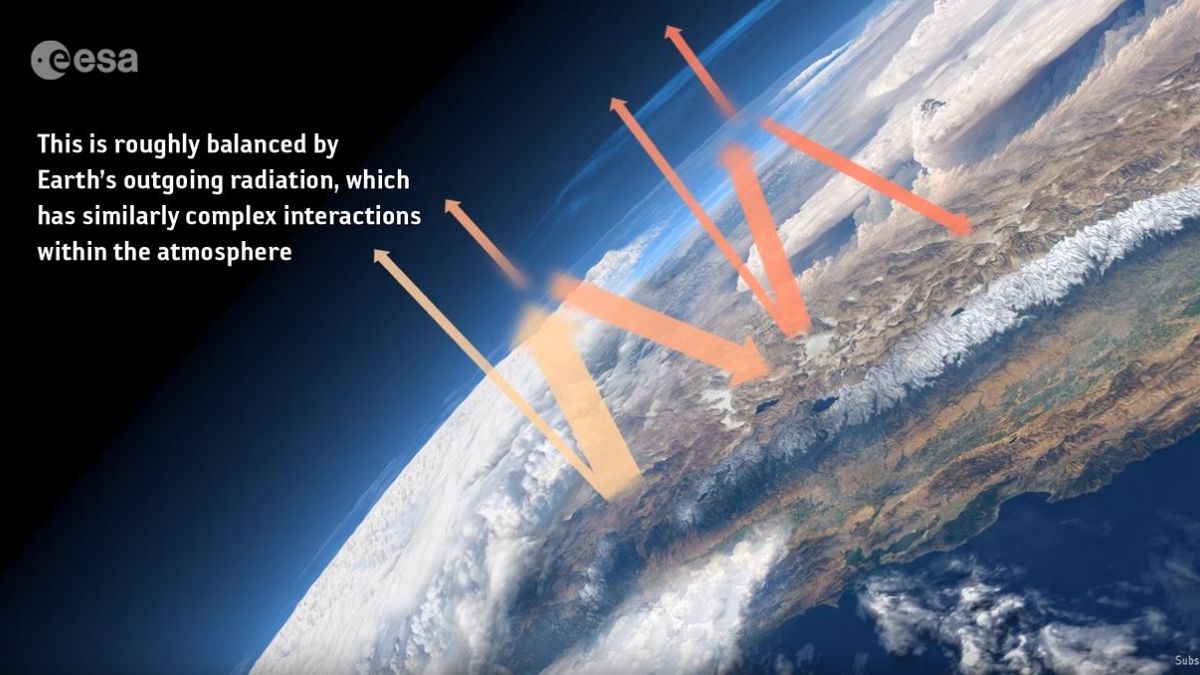The European Space Agency has commissioned a new satellite mission in a bid to find a crucial missing piece of the climate jigsaw.
The European Space Agency has commissioned a new satellite mission in a bid to find a crucial missing piece of the climate jigsaw.
It will allow scientists to measure and understand the influence of the Earth's far-infrared emissions on its climate system.
The mission, called FORUM (Far-infrared Outgoing Radiation Understanding and Monitoring), was chosen over another project that aimed to use a satellite to measure ocean current and waves, following consultation with the scientific community.
Wolfram Mauser, who chaired ESA’s advisory committee for earth observation, said, “Both mission concepts are outstanding in the value they would bring to science and are technologically ready to be built, so it was difficult to recommend which one should be implemented.
“Nevertheless, FORUM promises to improve climate models and, therefore, climate prediction. So with the issue of climate change a major global concern, we finally decided to recommend this concept – and we are very happy that ESA has taken our recommendation.”
Mark Drinkwater, head of the European agency's earth exploration missions, explained to Euronews that FORUM has been chosen "for its unique contribution to Earth system science, with a focus on the processes that regulate the Earth's radiation budget and are therefore of critical importance to the climate".
He added: "The main research objective of the FORUM mission is to evaluate the role of far-infrared in the configuration of the current climate and thus reduce uncertainty in predictions of future climate change. This will be addressed by:
a) Make precise measurements of global far-infrared radiation to validate the current state of the models.
b) Use measurements to understand the processes that control the transfer of far-infrared radiation and thus the Earth's greenhouse effect.
c) Updating the knowledge of these processes in order to transfer it to weather and climate prediction models.
d) Characterising critical feedback mechanisms.
"To achieve these scientific goals, FORUM aims to measure the Earth’s top-of-atmosphere emission spectrum in the far-infrared region.
"Approximately half of Earth’s emission to space occurs within the far-infrared region of the spectrum. It will improve our understanding of the climate system by enabling quantification of the far-infrared contribution to the Earth radiation budget (particularly focusing on the impact of water vapour contribution, cirrus cloud properties, and ice/snow surface emissivity).
"FORUM will measure the Earth’s top-of-atmosphere emission spectrum using a single satellite carrying two optical instruments: the FORUM Sounding Instrument, and the FORUM Embedded Imager. Its instruments will measure spectrally resolved radiance.
"Presently, observations only cover the mid-infrared region, and there are currently no measurements in the far-infrared. The satellite is planned to fly in a loose formation with MetOp-SG (A1) satellite, to exploit synergy with the observations from the next generation of the Infrared Atmospheric Sounding Interferometer (IASI) instrument onboard of this meteorological satellite.
"The temperature of the Earth's surface is determined by the balance of radiation in the upper atmosphere, but this balance has been disturbed by the emission of greenhouse gases trapping heat that would otherwise escape into space in the atmosphere.
"More than half of this outgoing longwave energy is in the far-infrared part of the electromagnetic spectrum, and it has not been measured until now."
Water vapour is a main greenhouse effect contributor but its precise role on global warming is not fully understood by scientists. Measuring the Earth's long infrared emissions will allow to better understand what's is going wrong with the Earth's cooling system.
Josef Aschbacher, director of earth observation programmes at ESA, said: “FORUM will measure, for the first time, the far-infrared part of the electromagnetic spectrum from space, thus allowing us to better understand the energy balance of our planet. FORUM will bring great benefits to climate science.
“Better understanding the complexity of our climate system and filling gaps in our knowledge is of critical importance as the consequences of climate change are far-reaching, affecting all facets of society and the natural world.”
The mission design will now be fine-tuned and built with a view to its launch in 2026.
